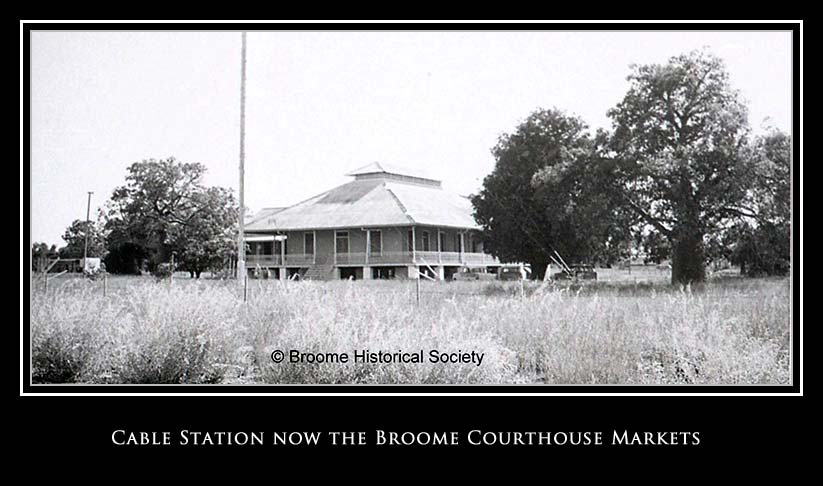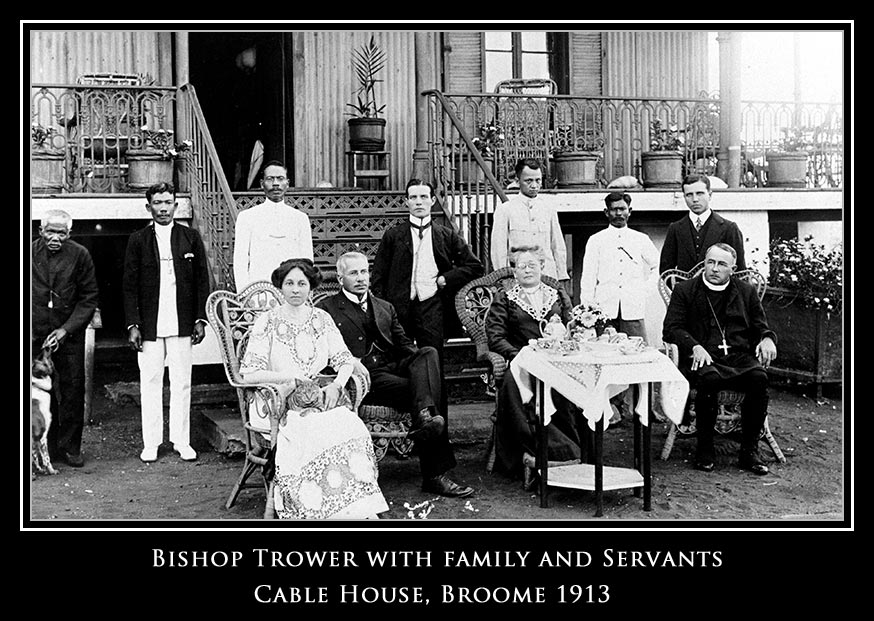The Broome Courthouse & Market History
The Broome Courthouse Markets are held in the beautiful Heritage listed gardens of the Broome Courthouse. Started over 25 years ago by a small group of locals wishing to trade local product, they have grown to become a major tourist attraction in Broome and host up to 115 creative stalls over the Dry Season. Trading every Saturday all year and Sunday from April – October, the local markets attracts visitors from far and wide.
The Courthouse Markets are overseen by the Broome Community Stallholders Association and a voluntary committee comprised of regular stallholders and is not for profit. Stall fees are charged and funds raised are donated back into the local community. SAFE Broome, St John Ambulance, schools, local youth and Kimberley Performing Arts are just some of the community groups who have been assisted with funds from the Broome Community Stallholders Association.
The Association also hosts the monthly Staircase to the Moon Night Markets from April – October. More information can be found on our Staircase page.
The history of the market site itself is also interesting…
In the late 1880s the small settlement of Broome located on Roebuck Bay in the north of the Colony of Western Australia consisted of two stores and a few scattered houses. It had no road or rail connection to the south of the Colony and depended on limited sea transport for its supplies and communication.
It was not until 1872 that Australia was connected overseas by submarine telegraphic cable, when a cable was laid from Banjoewangie in Java to Darwin. A second cable, paralleling the first, was laid in 1880. Due to frequent breaks in the cable as a result of submarine volcanic activity, there arose an urgent need to lay a third cable, away from the seismic zone. In February1889, a submarine telegraph cable was laid by cable laying ship CS Seine to connect Java and Australia and was landed on what is today known as Cable Beach.
Between the 3rd and 9th March 1889, the prefabricated ironwork and timber making up the building for the Cable Station, was transported to Broome as deck cargo on the CS Seine. Due to depth limitations in Roebuck Bay the material was graduaily offloaded onto the Sagitta, which by a stroke of good fortune happened to be laid up at Broome over the cyclone season. It was then taken up the tidal creek, Dampier Creek and unceremoniously thrown overboard at high tide. The sections were then retrieved at low tide, dragged manually up the creek, over the mud and stored on the beach, prior to being transported to the Station site and erected on the land now bounded by Frederick, Hamersley, Stewart and Weld Streets. A comment in the Engineers report stated, “that it seemed a pity to treat polished teak in this way, but no other method was practicable and no real harm was done though the appearance suffered a little.” The Chinese who had collected and loaded the teak in Singapore, traveled with it, to erect the house and it was those Chinese labourers who had to cart everything across the mudflats.
History


The building was occupied by November 1889 and included rooms for the Cable Station and separate living quarters. Vegetable gardens were developed around the building and on the adjacent lot, for use in cooking which was carried out in a separate kitchen building. The kitchen has been demolished but the floor slab remains and is now used for the toilet block and store.
The Cable Station had a tennis court, a billiard room, and servants to look after the British staff and their guests. It was thus an elegant and attractive place that featured prominently in the early social life of the town.
The End of the Broome Cable Station
In 1914 the Broome Cable Station was taken out of service after being in operation for 25years when the Eastern Extension, Australasia and China Telegraph Company Limited (referred to as the E.E.T. Company) built a new station at Cottesloe (near Perth, WA) with a cable link to Africa via the Cocos Islands.
In 1921, the Cable Station was purchased from the Telegraph Company for the sum of 3000 pounds and after a further expenditure of 1100 pounds was converted into a Court House. Apart from its use by the army in World War 2, the building has served as the Broome Court House. Fortunately the size and fabric of the Station was not changed and it stands today in 3 acres of landscaped tropical gardens, a magnificent iron and timber building, as an excellent example of 19th Century Colonial Architecture. This building is the oldest Cable Station still standing in Australia today.
Extract from a report by Max Anderson Feb 2004
Extract from a report by Dr Cathie Clement (Perth) and Heritage and Conservation Professionals
Kindly supplied by the Broome Historical Society
